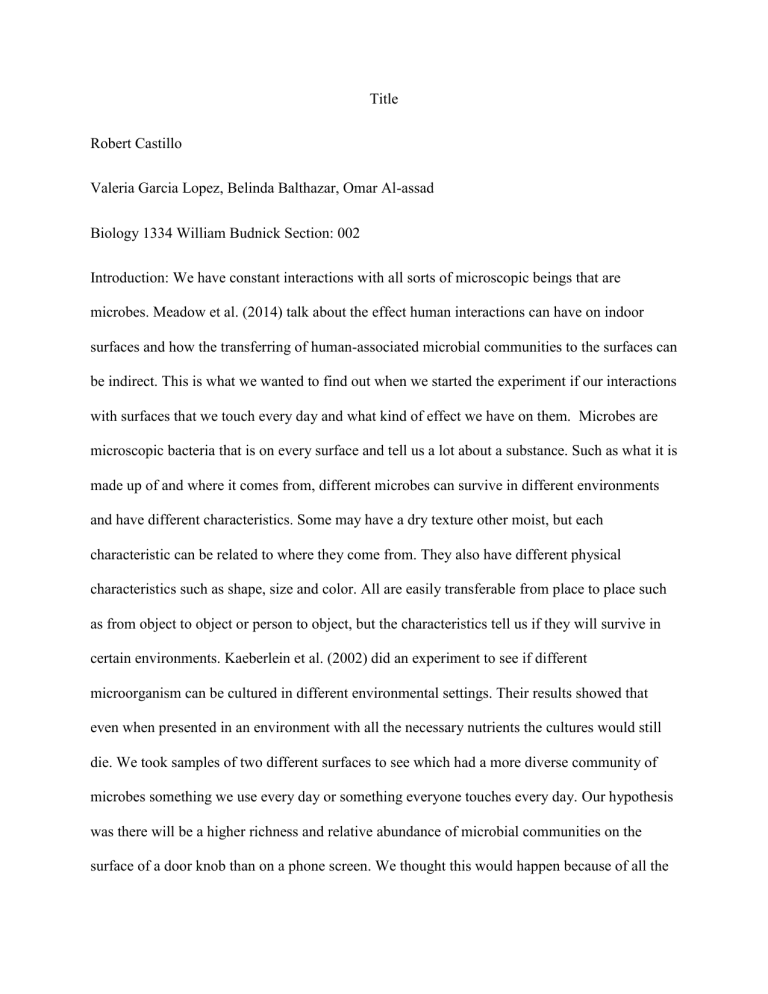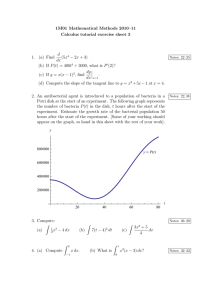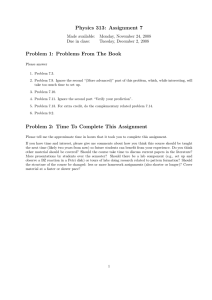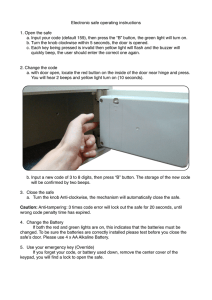
Title Robert Castillo Valeria Garcia Lopez, Belinda Balthazar, Omar Al-assad Biology 1334 William Budnick Section: 002 Introduction: We have constant interactions with all sorts of microscopic beings that are microbes. Meadow et al. (2014) talk about the effect human interactions can have on indoor surfaces and how the transferring of human-associated microbial communities to the surfaces can be indirect. This is what we wanted to find out when we started the experiment if our interactions with surfaces that we touch every day and what kind of effect we have on them. Microbes are microscopic bacteria that is on every surface and tell us a lot about a substance. Such as what it is made up of and where it comes from, different microbes can survive in different environments and have different characteristics. Some may have a dry texture other moist, but each characteristic can be related to where they come from. They also have different physical characteristics such as shape, size and color. All are easily transferable from place to place such as from object to object or person to object, but the characteristics tell us if they will survive in certain environments. Kaeberlein et al. (2002) did an experiment to see if different microorganism can be cultured in different environmental settings. Their results showed that even when presented in an environment with all the necessary nutrients the cultures would still die. We took samples of two different surfaces to see which had a more diverse community of microbes something we use every day or something everyone touches every day. Our hypothesis was there will be a higher richness and relative abundance of microbial communities on the surface of a door knob than on a phone screen. We thought this would happen because of all the different people touching the door knob they would transfer more microbes than on the phone screen that usually one person just uses throughout the day. Methods: Before we started the experiment, we gathered all the needed materials for the experiment which were sterile water, parafilm, cotton swabs and agar plates. After that we just swabbed the door knob and phone screen and then gently streaked the agar plates with the swabs. We streaked the agar plates the proper way, sectioning of the plate into 3 parts and going side to side. Then after we streaked the plates we used parafilm to seal the two halves of the plate together and made holes so that air would go between the plates. Then they were placed in incubators for a week so that they could grow enough to the point to where we could see what kind of microbial communities formed on the two surfaces. The independent variables were the surfaces we swabbed the classroom doorknob and the phone screen of someone in the group. The dependent variable was the thing we were measuring the richness and evenness of the microbial communities. Some of the possible experimental errors were accidental contamination of swab and/or water, not streaking the plate correctly and not having enough holes on the side of the plate. We also don’t know the last time the door knob had been cleaned which could influence our results. Results: The phone screen bacteria plate had more abundance of microbial communities then the door knob, but the door knob had more coverage of one bacteria. As shown in figure 1, species A is a glistening, moist, orange and has a raised elevation. This species was found predominately on the door knob petri dish. Species B was glistening, moist, yellow and had a raised elevation, the phone screen petri dish and more of this bacterium. Species C was glistening buttery, eggshell white and had a raised elevation, this was only found on the phone screen petri dish. Species D was dull, brittle, brown/white and had an umbonate elevation this was only found on the door knob petri dish and took up about half the plate. This bacterium looked as if it had some hair and was going to take over the whole plate if given enough time it was also found in the first and last section of the petri dish. Species E was dull, brittle, light pink and raised, it was only found on the phone screen petri dish and even then there were only a few. The phone screen petri dish had two types of bacteria that didn’t show up at all on the door knobs and out of the two they had in common the phone screens dish had a considerably more. Besides that, huge difference they shared many smaller bacteria colonies the phone plate just had more of them. Based on the observations made we saw that the phone has a more diverse community of colonies whereas the door knob has one bacteria that covers half the petri dish. We had a tough time distinguishing the elevation of the bacteria because of the petri dish in the agar plate using the microscope. Species ID A B C D E Surface Glistening Glistening Glistening Dull Dull Texture Moist Moist Buttery Brittle Moist Color Orange Yellow Eggshell White Brown white Light Pink Elevation raised raised raised raised raised Figure 1: Physical characteristics of species A, B, C, D, E. Conclusion: The results didn’t support our hypothesis that the door knob would have more richness and abundance of microbial communities than the phone screen. It is the opposite the results show that the phone screen has more richness and abundance than the door knob. This is because the phone screen had a more diverse colony with more bacteria than the door knob. The door knobs results showed that it could be possible that though it has less abundance and diversity, it may have a certain type of bacteria that thrives in that environment. This is because the door knobs petri dish was about 50% dominated by one bacteria. Work Cited: Kaeberlein, T., et al. “Isolating ‘Uncultivable’ Microorganisms in Pure Culture in a Simulated Natural Environment.” Science, American Association for the Advancement of Science, 10 May 2002, science.sciencemag.org/content/296/5570/1127.full. and, R. M. D. Rodney M. Donlan. Clinical Microbiology Reviews (2002). Available at: http://cmr.asm.org/content/15/2/167.short. (Accessed: 3rd October 2017) Meadow JF, Altrichter AE, Kembel SW, Moriyama M, O’Connor TK, Womack AM, Brown GZ, Green JL, Bohannan BJM. Bacterial communities on classroom surfaces vary with human contact. 2014 [accessed 2017 Oct 3]. https://www.ncbi.nlm.nih.gov/pmc/articles/PMC3945812/






